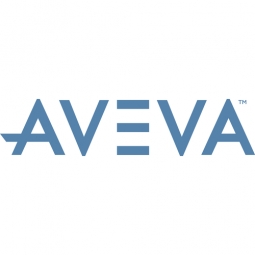下载PDF
Auto-Bake Uses Wonderware Supervisory HMI Software Solution to Provide Baking Systems that Make Mouths Water
技术
- 功能应用 - 远程监控系统
适用行业
- 食品与饮料
适用功能
- 离散制造
用例
- 远程资产管理
- 自动化制造系统
服务
- 系统集成
挑战
Auto-Bake, a producer of commercial machinery for the baking industry, was faced with the challenge of creating a fast yet secure production system. They aimed to design a vertical oven with a reduced footprint and increased production flexibility. The company needed an interface that would work equally well with both Rockwell Automation and Siemens programmable logic controllers (PLCs). They were also looking for an independent supplier of touch panels to replace some proprietary technologies that had become outdated. The company markets its products worldwide and thus needed to support numerous local languages.
关于客户
Auto-Bake is a Sydney-based company that has been in operation for thirty years. The company designs and produces automated continuous baking systems for its global commercial food customers. Auto-Bake's Serpentine systems blend traditional baking practices with modern technology to provide baked goods that look, feel and taste “homemade”. The baking system uses a vertical oven, through which chain-suspended pans and trays move along a vertical “S” serpentine path. The advantages of this method over a conventional oven system include reduced footprint for the same baking capacity and increased flexibility. Simply changing the trays and pans in the oven enables the bakery to change products, for instance, from cakes to muffins or cookies. In addition, the compact vertical ovens facilitate more precise control of temperatures for each level or zone, resulting in more even baking and improved consistency.
解决方案
Auto-Bake first deployed an operator interface using Wonderware’s InTouch HMI software in 1999. At the start of 2003, Auto-Bake standardized on the Wonderware Supervisory HMI Software Solution with Touch Panel Computers from Wonderware’s line of Industrial Computers. To date, more than twenty Auto-Bake lines have been installed or upgraded to the Wonderware Supervisory HMI Solution featuring Industrial Computers bundled with InTouch software. The Wonderware software’s standardized development tools make it easier for Auto-Bake to handle a variety of modules and configurations. The company can now manage a higher volume. The quality of Auto-Bake's end-products has improved because they can now spend more time on quality assurance and less time replicating the same data on multiple computers.
运营影响
相关案例.

Case Study
The Kellogg Company
Kellogg keeps a close eye on its trade spend, analyzing large volumes of data and running complex simulations to predict which promotional activities will be the most effective. Kellogg needed to decrease the trade spend but its traditional relational database on premises could not keep up with the pace of demand.

Case Study
HEINEKEN Uses the Cloud to Reach 10.5 Million Consumers
For 2012 campaign, the Bond promotion, it planned to launch the campaign at the same time everywhere on the planet. That created unprecedented challenges for HEINEKEN—nowhere more so than in its technology operation. The primary digital content for the campaign was a 100-megabyte movie that had to play flawlessly for millions of viewers worldwide. After all, Bond never fails. No one was going to tolerate a technology failure that might bruise his brand.Previously, HEINEKEN had supported digital media at its outsourced datacenter. But that datacenter lacked the computing resources HEINEKEN needed, and building them—especially to support peak traffic that would total millions of simultaneous hits—would have been both time-consuming and expensive. Nor would it have provided the geographic reach that HEINEKEN needed to minimize latency worldwide.

Case Study
Energy Management System at Sugar Industry
The company wanted to use the information from the system to claim under the renewable energy certificate scheme. The benefit to the company under the renewable energy certificates is Rs 75 million a year. To enable the above, an end-to-end solution for load monitoring, consumption monitoring, online data monitoring, automatic meter data acquisition which can be exported to SAP and other applications is required.

Case Study
Coca Cola Swaziland Conco Case Study
Coco Cola Swaziland, South Africa would like to find a solution that would enable the following results: - Reduce energy consumption by 20% in one year. - Formulate a series of strategic initiatives that would enlist the commitment of corporate management and create employee awareness while helping meet departmental targets and investing in tools that assist with energy management. - Formulate a series of tactical initiatives that would optimize energy usage on the shop floor. These would include charging forklifts and running cold rooms only during off-peak periods, running the dust extractors only during working hours and basing lights and air-conditioning on someone’s presence. - Increase visibility into the factory and other processes. - Enable limited, non-intrusive control functions for certain processes.

Case Study
Temperature Monitoring for Restaurant Food Storage
When it came to implementing a solution, Mr. Nesbitt had an idea of what functionality that he wanted. Although not mandated by Health Canada, Mr. Nesbitt wanted to ensure quality control issues met the highest possible standards as part of his commitment to top-of-class food services. This wish list included an easy-to use temperature-monitoring system that could provide a visible display of the temperatures of all of his refrigerators and freezers, including historical information so that he could review the performance of his equipment. It also had to provide alert notification (but email alerts and SMS text message alerts) to alert key staff in the event that a cooling system was exceeding pre-set warning limits.

Case Study
Coca-Cola Refreshments, U.S.
Coca-Cola Refreshments owns and manages Coca-Cola branded refrigerators in retail establishments. Legacy systems were used to locate equipment information by logging onto multiple servers which took up to 8 hours to update information on 30-40 units. The company had no overall visibility into equipment status or maintenance history.





